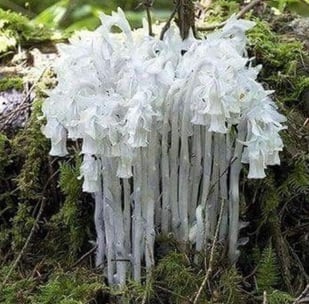Exploring the Mystical Properties of Ghost Pipe: Nature's Ethereal Herb
10/26/20246 min read
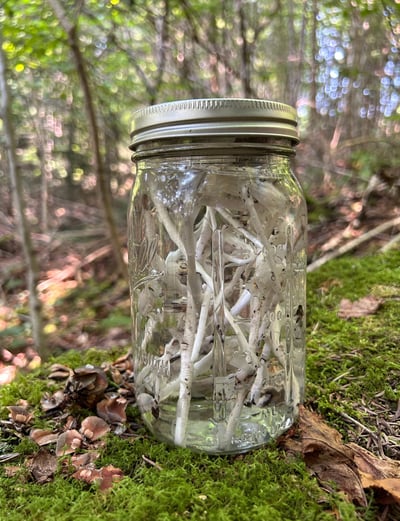

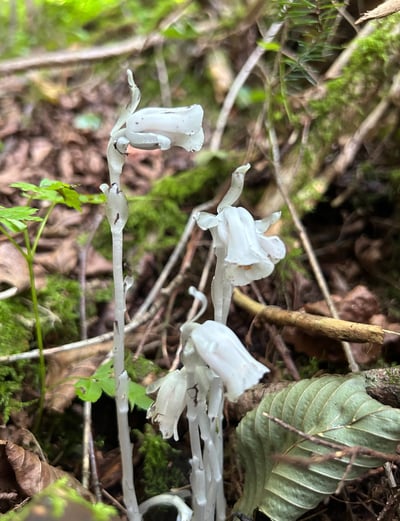

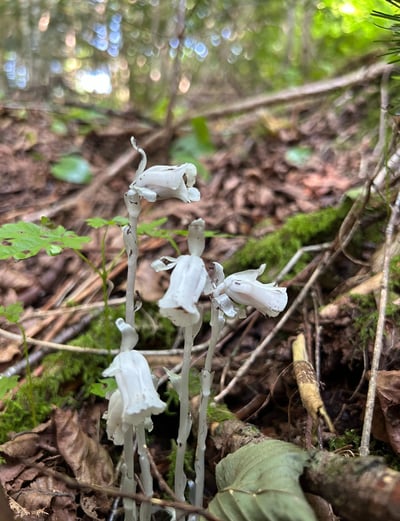

Ghost Pipe: The Ethereal Herb with Medicinal Mysteries and Uses
Nature is full of mysteries, but few plants are as strange and enchanting as Ghost Pipe (Monotropa uniflora). With its translucent, ghostly white appearance, it seems otherworldly, as though plucked from a dream. Beyond its striking look, this delicate plant has been revered for centuries for its medicinal uses, particularly for relieving pain and soothing emotional distress. In this post, we’ll explore the history, medicinal benefits, preparation methods, and precautions associated with this rare herb.
What is Ghost Pipe (Monotropa uniflora)?
Ghost pipe, scientifically known as Monotropa uniflora, is a fascinating plant that often captures the imagination of those who encounter it. Unlike most plants, ghost pipe lacks chlorophyll, which gives it its unique ghostly appearance. This herb grows in shaded woodlands and thrives in nutrient-rich soil, primarily in North America and parts of Asia. Its ethereal white and sometimes pale pink blooms contribute to its mystical reputation, making it a subject of curiosity for herbalists and nature enthusiasts alike.
Traditional and Folk Medicinal Use
How Ghost Pipe Works: Active Compounds and Effects
It is believed that Ghost Pipe works by influencing how the body perceives pain. Rather than numbing pain directly (as with opioids), it appears to alter the person’s relationship with pain, making it more bearable. This quality has led herbalists to compare it to a "spiritual analgesic" that offers both physical and emotional relief.
It is thought that Ghost Pipe might interact with neurotransmitters in the central nervous system, though research on the plant’s exact mechanisms remains limited. Users often describe a calming, grounded sensation after taking it, which makes it useful for both physical pain and emotional turmoil.
As interest in holistic remedies continues to rise, modern research has begun to explore the potential therapeutic benefits of ghost pipe. While its uses are still primarily based on traditional knowledge, preliminary studies suggest that ghost pipe may contain compounds with analgesic and anti-inflammatory properties. However, it's important to approach its use with caution. Ghost pipe is often considered a delicate herb due to its ecological sensitivity and declining populations in some areas. Sustainability practices, including foraging with respect to the plant's environment, are essential to ensure this mystical herb continues to thrive.
How to Prepare Ghost Pipe (Tinctures and Extracts)
Harvesting: Carefully harvest a small amount of Ghost Pipe, leaving plenty behind to ensure it can regrow.
Chop the plant: Cut the plant into small pieces to release its compounds.
Make the tincture: Place the chopped plant in a glass jar and cover it with high-proof alcohol (like vodka). Use a 1:2 or 1:3 ratio of plant to alcohol.
Steep: Store the jar in a cool, dark place for 4-6 weeks, shaking it occasionally.
Strain and store: After steeping, strain the liquid into a dropper bottle for easy use.
Dosage Tip: Ghost Pipe tinctures are powerful, and only a few drops are usually needed. Start with a small dose to gauge its effects. This is drops like rain drops, not full droppers.
Ethical and Environmental Considerations
Scientific Research and Modern Perspectives
Scientific research on Ghost Pipe is limited, though herbalists continue to explore its potential. Some herbalists use it for chronic pain management, while others recommend it for easing anxiety and PTSD symptoms. However, more studies are needed to understand more of its active compounds.
Modern herbalists often emphasize the plant’s ability to bring emotional clarity, especially in moments of distress. Users describe it as offering a shift in perspective that helps them engage with pain or grief in a more manageable way.
Precautions and Contraindications
Respecting the Ghostly Healer
Ghost Pipe is more than just a plant—it’s a reminder of nature’s complexity and mystery. Its ability to ease pain and soothe emotional distress has made it a valuable ally in herbal medicine. However, with its beauty comes responsibility. As we explore the benefits of Ghost Pipe, we must also respect its delicate place in the ecosystem and ensure it remains available for future generations.
Ghost pipe remains an intriguing example of nature's wonders, blending beauty with medicinal potential. Its unique characteristics and historical uses provide a glimpse into the rich tapestry of herbal medicine. As with any natural remedy, it is essential to consult with healthcare professionals and conduct thorough research before incorporating ghost pipe into personal health regimens. The ethereal qualities of ghost pipe not only invite exploration into its historical context but also challenge current scientific understanding, potentially paving the way for new discoveries in herbal medicine.
Whether you seek relief from pain, emotional clarity, or simply want to learn more about this fascinating plant, Ghost Pipe offers an invitation to connect with nature’s healing power. Treat it with care, and it may just whisper some of its ancient wisdom to you.
Ghost Pipe, also known as Indian Pipe or Corpse Plant, belongs to the Ericaceae family and is a fascinating example of parasitic mycoheterotrophy. Unlike most plants, Ghost Pipe doesn’t rely on photosynthesis. Instead, it derives nutrients through a complex relationship with fungi that are connected to tree roots. This peculiar dependency gives the plant its pale white appearance, as it lacks chlorophyll.
It typically grows in dark, moist woodlands across North America, often appearing briefly in summer and early fall. The plant’s rarity and fleeting presence have added to its reputation as a plant shrouded in mystery and folklore.
Some common uses included
Pain relief: Ghost Pipe was used to treat headaches, toothaches, and other types of acute pain.
Anxiety and emotional distress: It was known to calm the mind and alleviate anxiety.
Fever and flu-like symptoms: As a mild febrifuge, it could help lower fevers and ease discomfort.
These uses are largely anecdotal, but herbalists continue to explore its potential for treating modern conditions like migraines, insomnia, and panic attacks.
The medicinal mysteries of ghost pipe are deep-rooted in herbal traditions. This plant has been used by indigenous peoples for centuries for various purposes. Traditionally, ghost pipe has been recognized for its sedative properties, offering relief from anxiety and promoting tranquility. The herb is often used in tinctures and teas, where its calming effects can be harnessed safely. Furthermore, ghost pipe’s association with pain relief has made it a valuable herb for ailments, particularly for those suffering from chronic pain or insomnia.
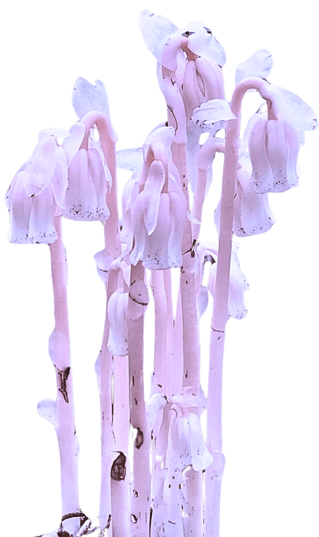

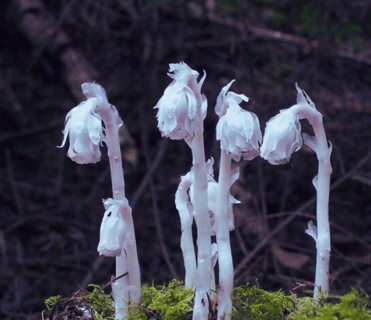



Ghost Pipe is often prepared as a tincture, where the fresh or dried plant is steeped in alcohol. Here’s a quick guide for preparing it:


Other Interesting Articles about Ghost Pipe from Other Sources:
Our Ghost Pipe
Experience the unique benefits of our Ghost Pipe Tincture, crafted with care using hand-harvested, Ghost Pipe.
Our tincture is made in small batches, honoring nature’s rhythms with responsible harvesting practices and without the use of chemicals or additives, to preserve the plant's natural qualities and potency.
Discover the gentle yet powerful support of Ghost Pipe—a thoughtful addition to any wellness routine.
Historically, Ghost Pipe has been used in indigenous medicine and folk herbalism to treat a variety of ailments. Native American tribes, including the Cherokee and Iroquois, recognized its value as a remedy for emotional distress, fever, and physical pain. Known for its ability to "take the edge off" both emotional and physical discomfort, Ghost Pipe was often used as an analgesic and sedative.Write your text here...
Due to its rarity and dependency on specific fungal networks, Ghost Pipe is not easily cultivated. It should be harvested sparingly and with great care. Over-harvesting can harm local ecosystems and diminish the plant’s population. If you’re interested in using Ghost Pipe, consider purchasing from sustainable sources or herbalists who practice ethical foraging.
Ghost Pipe is powerful, and while it is not known to be toxic in small doses, caution is advised. Possible side effects include nausea, dizziness, or an overly sedative effect.
Individuals with chronic conditions or those taking medications should consult a healthcare provider before using Ghost Pipe. Pregnant and breastfeeding women are advised to avoid it.
